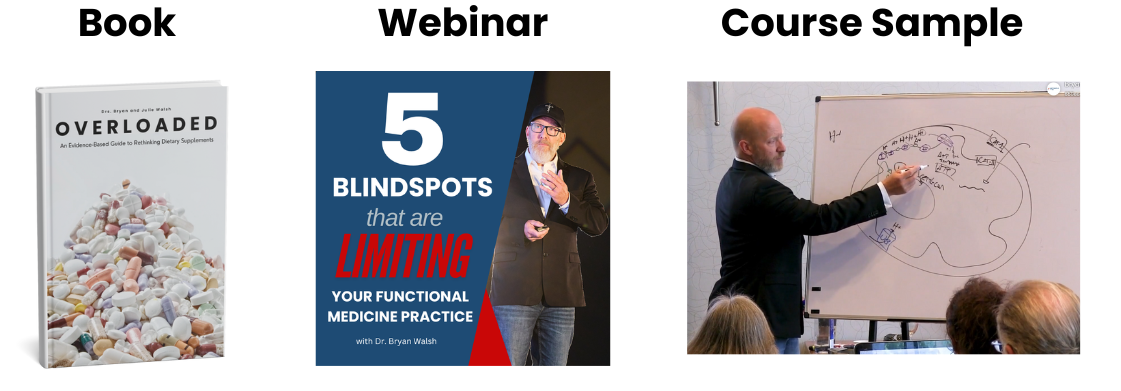How To Test Selenium Levels (My Five-Point Selenium Checklist)
Apr 13
/
Drs. Bryan & Julie Walsh
Write your awesome label here.
Selenium is a critically important, yet often misunderstood element.
On the one hand, selenium has many important roles having to do with proper immune system function, glucose regulation, reproduction, mood, cancer prevention, as well as for optimal functioning of specific selenoenzymes necessary for proper thyroid hormone synthesis and glutathione use.
On the one hand, selenium has many important roles having to do with proper immune system function, glucose regulation, reproduction, mood, cancer prevention, as well as for optimal functioning of specific selenoenzymes necessary for proper thyroid hormone synthesis and glutathione use.
On the other hand, selenium is said to have a ‘narrow therapeutic window’, and according to research, exceeding this optimal intake level might lead to some of the very same issues selenium deficiency prevents.
Despite this narrow window between deficiency and excess, clinicians and practitioners are quick to recommend selenium supplementation to their patients for its antioxidant, anti-inflammatory, thyroid-improving, and glutathione-boosting properties.
This is problematic and could cause patients more harm than good.
This is problematic and could cause patients more harm than good.
As part of this research, we took a close look at a popular Hashimotos protocol designed by a major nutraceutical company and found the selenium content from all the supplements combined to be almost 20 times the RDA for selenium!
What does that mean? Practitioners who are depending on these protocols to help their patients may be causing additional issues instead.
If too little selenium is bad, too much is toxic, and the difference between the two is narrow, how can we as practitioners know who needs extra selenium and who doesn’t?
One answer is testing, and we should probably be doing more of it if we’re recommending selenium as a supplement, or if it is in supplements we’re giving.
If too little selenium is bad, too much is toxic, and the difference between the two is narrow, how can we as practitioners know who needs extra selenium and who doesn’t?
One answer is testing, and we should probably be doing more of it if we’re recommending selenium as a supplement, or if it is in supplements we’re giving.
There are many ways of testing selenium status – blood, hair, urine, stool, and even toenails – each having pros and cons, and various levels of accuracy.
People debate about the accuracy of various types of selenium testing but the reality is, using serum to determine selenium levels is good enough. It is easily the most often used test in research studies around the world, generally correlates with intake, and is, therefore, the most useful tissue and test for evaluating selenium status. The fact that it is so often used also helps give us insight into what optimal levels are for most people.
A bit of caution is required when interpreting serum selenium, however. According to some reports, selenium is a negative acute phase reactant, which means it can decrease during periods of inflammation. This simply means that when running serum selenium, take a quick look at albumin, and CRP if you have it. If albumin is also low, or CRP is high, then serum selenium might not be a good indication of selenium status. But if those other markers are normal, then serum selenium is a good indicator of overall selenium status.
Selenium is not something to be toyed with, or given haphazardly, and steps should be taken to first determine whether someone is deficient, or not.
Are you a practitioner who would like to have a solid roadmap when it comes to selenium?
We have broken down all of our research and created an easy-to-follow Five-Point Selenium Checklist so you can confidently determine who needs selenium and who doesn’t.
We have broken down all of our research and created an easy-to-follow Five-Point Selenium Checklist so you can confidently determine who needs selenium and who doesn’t.
Learn this, and so much more in our clinical mentorship, Clinician's Code Foundation Professional Certificate where we help practitioners build confidence, cut overwhelm, and become successful in Functional Medicine.
Sadie
"I LOVE everything about these presentations. It makes me excited to practice. 😊"
Carrie
"This is incredible information Dr Walsh."
Fernando
"Another outstanding presentation...
Thank you!"
Thank you!"
Khaled
"You ground me from all the FM Hype out there, which is mostly messy, biased, and FOMO driven. Please keep doing what you're doing. Your work is benefiting so many patients around the globe. Truly blessed to be amongst your students. Much love ❤️"
Get Free Functional Medicine Education
Thank you!
Policy Pages
Join our mailing list
Get updates and special offers right in your mailbox.
Thank you!
Learn the PRAL Score of 30 Common Foods
(Based on Portion Sizes)
And get started evaluating your diet today!
Enter your email address below to subscribe to our mailing list and get the guide free!
Thank you!
Grab our free Reactive Hypoglycemia Playbook
Enter your email address below to subscribe to our mailing list and get the guide free!
Thank you!
See Inside the Program
Fill in your information below and we'll give you access to a free inside look into the entire program.
Thank you!
Get Free Stuff!

Fill in your information below and we'll give you our 100+ page eBook "Overloaded", our one hour "State of the Industry" webinar, and a sneak peek into one of our courses.
